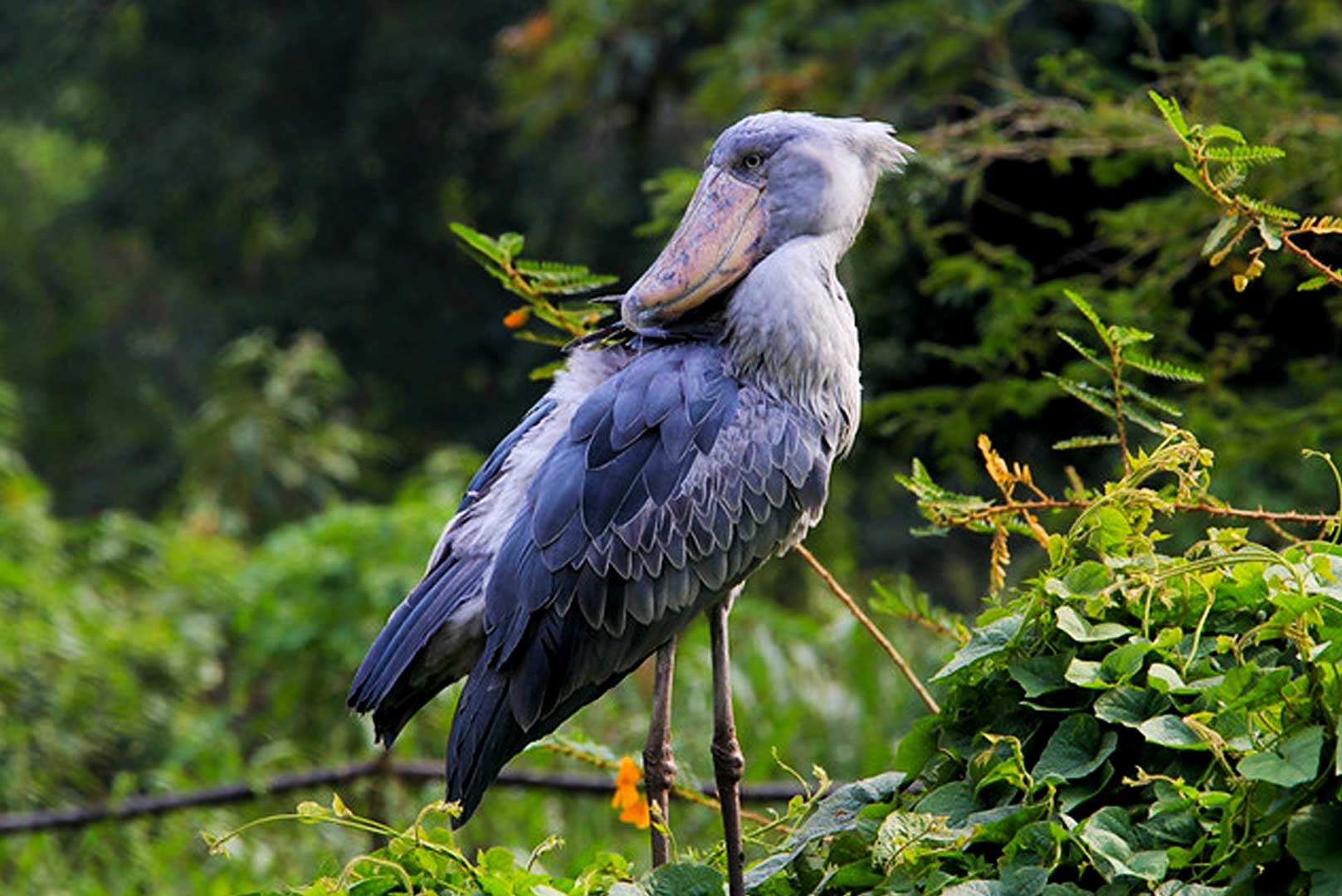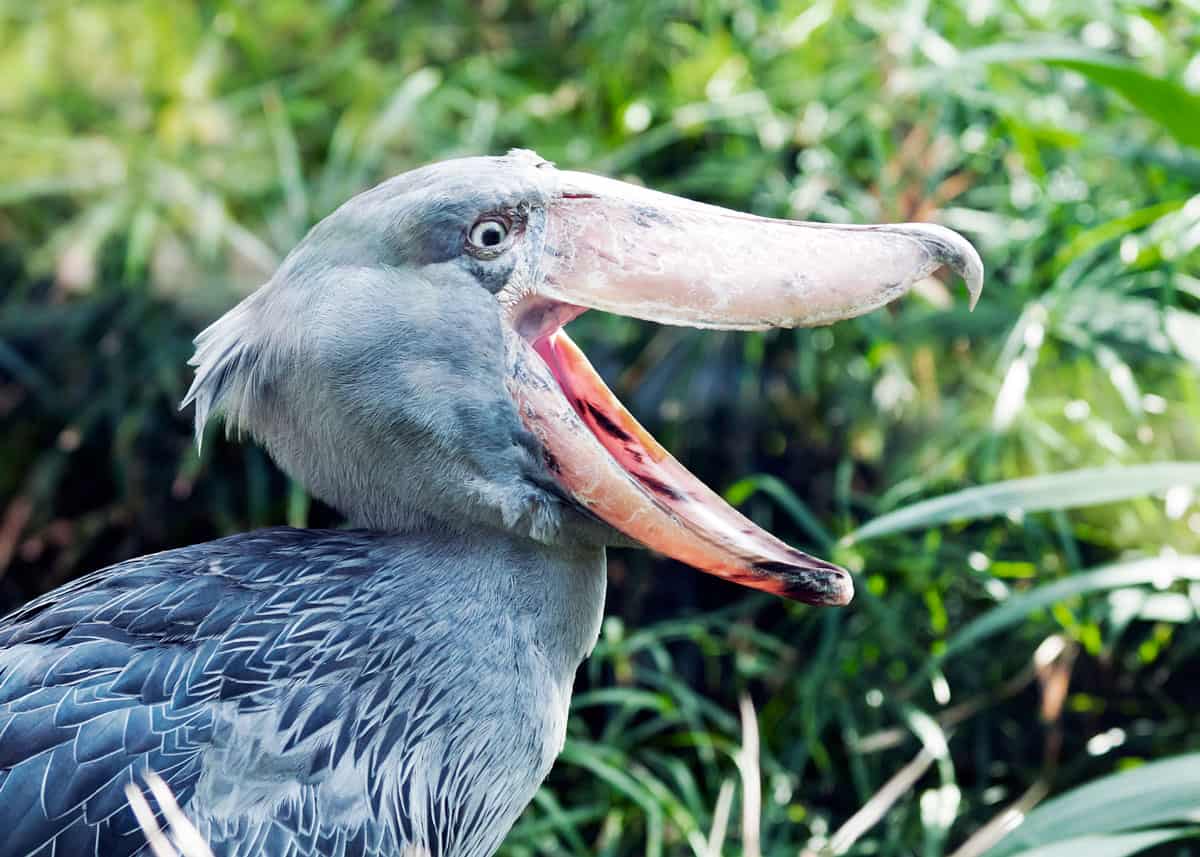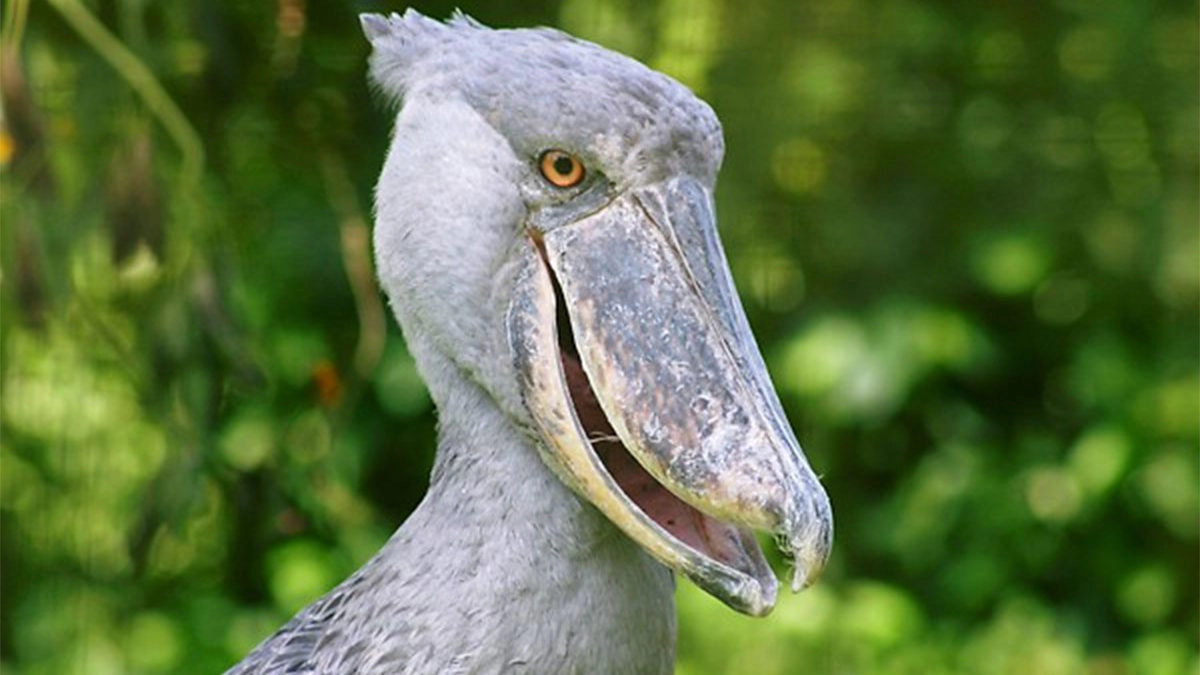The Shoebill Stork; lifespan, Where to see the Shoebill stork
The shoebill stork is one of the most elusive rarest, most famous bird in Africa and one of the world’s ugliest bird. The Shoebill is a censoriously endangered bird species that can only be observed on an African safari mainly in Uganda because this is where they can be easily spotted compared to other African Safari destinations. The shoebill stork is one of the most majestic pre-historical looking bird that still exists today and it is believed that the shoebill is related to the now-extinct dinosaurs because of its appearance.

What is a Shoebill Stork?
The Shoebill is a very large long-legged wading bird that is also commonly known as the Whale bill, Balaeniceps rex, Whale-headed stork and shoe-billed stork. The shoebill bird is an elusive bird whose name was derived from its enormous shoe-shaped bill and its bill is ranked as the third longest bill among extant birds after pelicans and other large storks, it is classified with the storks in the order Ciconiiformes basing on its morphology, however, the genetic evidence classifies it with the pelicans and herons in the Pelecaniformes. The shoebill is a tall bird with a typical height ranging from 110 to 140 cm and weighing between 4 to 7 kg, its bill is straw-colored with erratic greyish markings. The shoebill’s feet is exceptionally large and it enables the shoebill to stand on aquatic vegetation while hunting and its neck is relatively shorter and thicker than other long-legged wading birds.
Why is the Shoebill Stork a unique bird?
The shoebill stork is a unique bird with the 3rd longest beak in the world and it is one of the most sought birds during a birding safari in Africa because of its unique features including its prehistorical dinosaur looks, the striking pale blue-eyed genes, its foot-long shoe-shaped bill that resembles a Dutch wooden clog, they have a long lifespan of 36 years and above, it has a big honking beak spanning 7 inches, it is one of the slowest bird when flying, it is among the extremely patient birds and it is an ambush bird which is capable of standing motionlessly like a statue for long periods to attack any prey within a safe distance.

How rare is it to see a shoebill stork
The shoebill storks are facing serious extinction due to different factors including hunting, habitat destruction, livestock ranching, climate changes, and many more which have affected the population of these birds hence they are rarely seen in the wild. The shoebills are critically endangered birds whose number is decreasing and their population is less than 5000.
Where to see the Shoebill stork in Uganda
Among all the birding destinations in Africa, Uganda is ranked as the top birding destination with the highest chances of spotting these critically endangered bird species in its natural habitat of freshwater swamps, marshes, Lakes, and Rivers with mixed vegetation. Below are the birding places in Uganda w
Mabamba Swamp
This is one of the best places to spot the elusive shoebill stork. This swamp is situated in the west of Entebbe on the northern shores of Lake Victoria in Uganda. The swamp covers an area of 2424 ha and it has thick marshes of papyrus, and water lilies. The swamp was named after the lungfish which is commonly found in its waters thereby attracting the shoebill because the primary food for the shoebill is Lungfish.
Semuliki National park
Semuliki national park is one of the finest top birding destinations founded in October 1993 in Uganda, situated in the western region in Bundibugyo district mainly in Bwamba County under the Uganda Wildlife Authority management. While in Semuliki, the shoebill stork can be easily viewed close to the Lake Albert area.
Queen Elizabeth National park
Queen Elizabeth national park is undoubtedly Uganda’s famous park known for harboring a large number of wildlife species in the park, is located in the Kasese district about 370 km South-West of Kampala in Uganda. The park is famously known for its majestic tree-climbing lions in the Ishasha sector and the shoebill stork can be spotted along Lake Edward flats in the Ishasha sector.
Murchison Falls National Park
This is one of the most visited national parks in Uganda situated in Northwestern Uganda spreading inland from the shores of Lake Albert around the Victoria Nile up to Karuma falls, Murchison falls National park is famously known for having the most powerful falls in the world. While in this park, the shoebill can be spotted on a boat cruise in the Albert delta where River Nile joins into Lake Albert.
Lake Mburo National Park
Lake Mburo national park is the only park in Uganda with elands, impala, and klipspringer and it is home to the largest population of Zebras. This park is situated in Nyabushozi county, Kiruhura district near Mbarara in Uganda. The shoebill can be spotted on a boat cruise on Lake Mburo.
Makanaga Bay Swamp
After the Mabamba swamp, the Makanaga swamp is an incredible birding site suitable for observing the shoebill stork and other water birds. This wetland is situated on Lake Victoria in the Mpigi district and it can be easily accessed on a canoe boat from Entebbe or Kampala.
Lugogo Swamp
Lugogo swamp is also a wonderful wetland suitable for shoebill watching, this swamp is found within Ziwa Rhino Sanctuary which is situated in Nakasongola in the River Kafu basin in the North of Kampala along the Kampala-Gulu highway. Lugogo swamp covers an area of 10km wide.
Uganda Wildlife Education Centre
The Uganda Wildlife education center is an exciting place to see the most cherished shoebill bird. It is located in Entebbe, it is very close to Entebbe International Airport which is a 10 minutes drive from the airport to Uganda wildlife education Centre and it stretches to Lake Victoria. This wildlife education Centre covers an area of approximately 70 acres comprising three ecosystems including Savannah, Forest and wetland.
here the shoebill stork and other bird species can be sighted throughout the day.
Can the Shoebill stork fly?
Despite their weight and height, shoebills can fly just like other bird species however it is one of the slowest of any bird and their long flights are rare and they fly not more than 100 to 500 m. The shoebill flies with its neck retracted and when its wings are held flat while soaring, its flapping rate estimated is at 150 flaps per minute.
What do the Shoebill storks feed on?
The shoebill storks are predators of wetland vertebrates because they are fond of Aquatic species mainly Marbled and African Lungfish, eels, and catfish however they crazily love Nile monitor lizards, water snakes, frogs, turtles, small waterfowl, and baby crocodiles which they hunt from swamps. The shoebill hunts patiently by standing motionlessly like a statue on floating vegetation to strike at its prey at the right moment using its beak. These species hunt entirely using vision while stalking its prey silently without engaging in tactile hunting
What is the lifespan of a shoebill stork?
The shoebills are solitary birds with an extraordinarily long life span compared to other bird species and animals whereby they can live longer for more than 35 years in the wild.

Are shoebills friendly to humans?
The shoebills are submissive shy bird species especially to humans, they are not aggressive in the presence of humans however the only thing they can do is to stare back at humans without imposing any threat and there are no records of shoebills attacking humans but they are quite sensitive to human disturbance. The shoebills are considered to be among the five most desirable birds in Africa b birders and researchers have been able to observe them on their nests at a close distance within 2 meters without portraying any threatening behavior.
Why do shoebills bow and shake their heads?
Shoebills have a proper way of communicating with each other through bowing to one another and they as well bow to attract their mates during their mating ritual. The shoebills normally shake their heads to expel water and algae which they scoop up while still holding tightly their main meal.
What happens if you bow to a shoebill?
Shoebills are interesting birds whereby if a human takes a deep bow, it bows back as a sign of respect and it even allows people to approach it and touch it unlike when they do not bow, it flies away.
Why is a shoebill stork scary?
The shoebill is ranked as the 1st scariest looking bird among the 7 scary bird species because of their look which comprises of strange death like stare. It has a strange historical appearance which is terrifying and creepy due its oversized shoe-shaped beak, it is a giant bird with a large body and huge wings.





